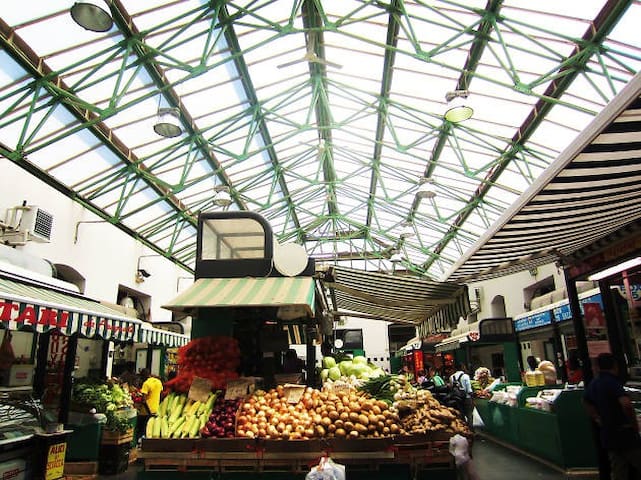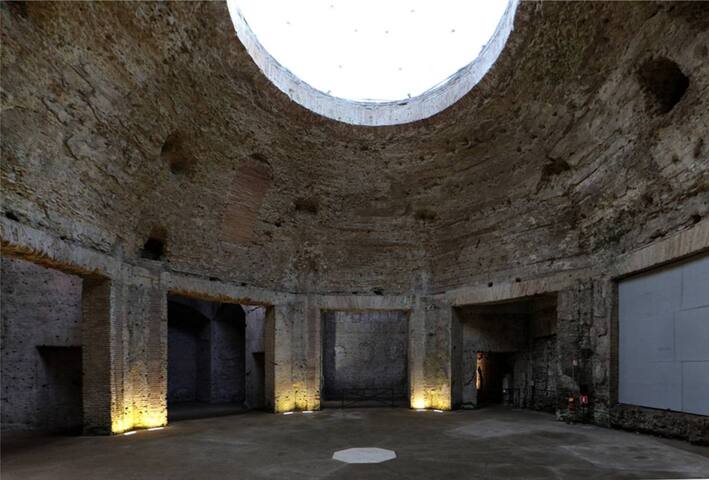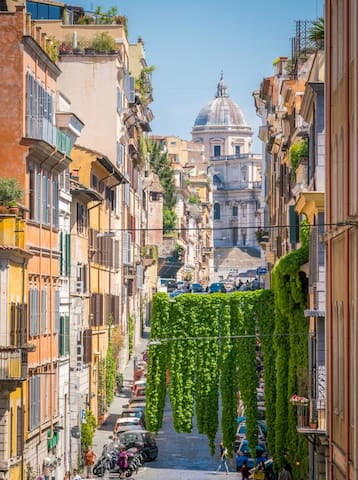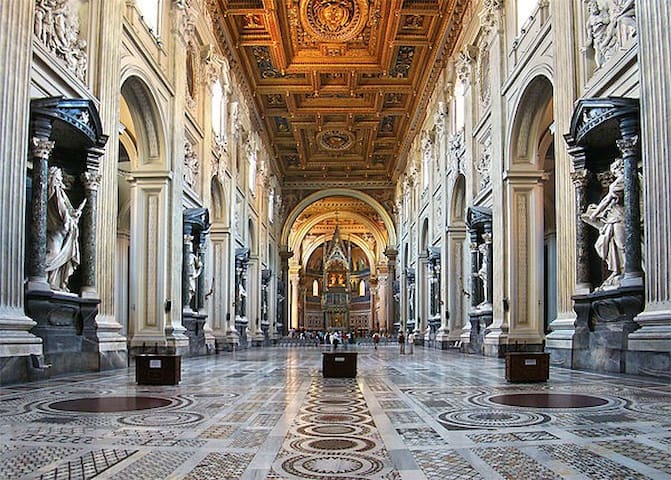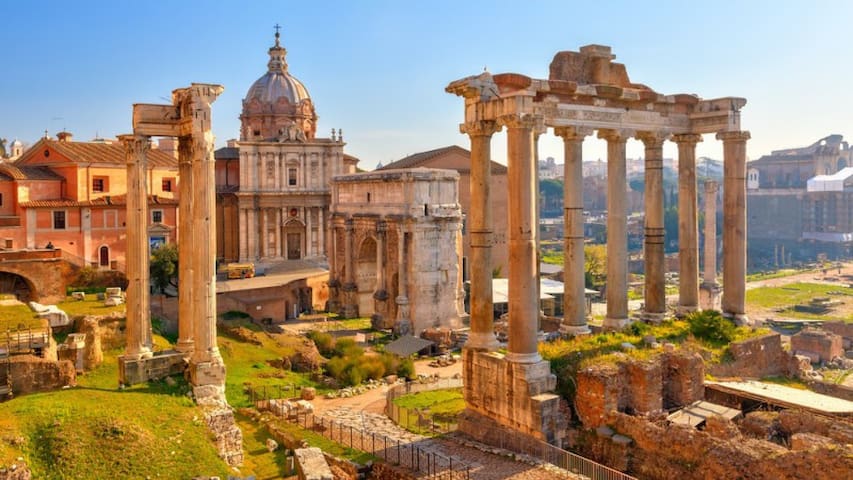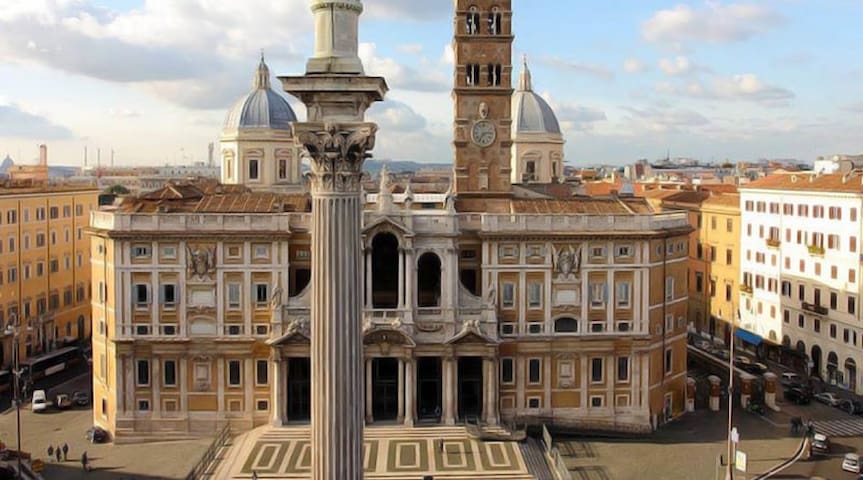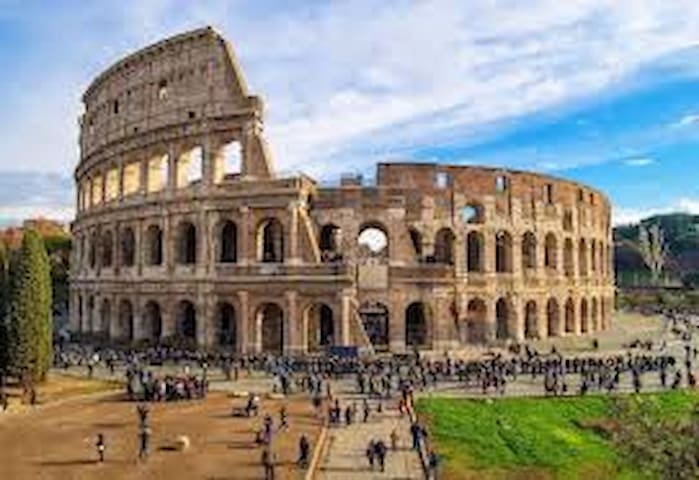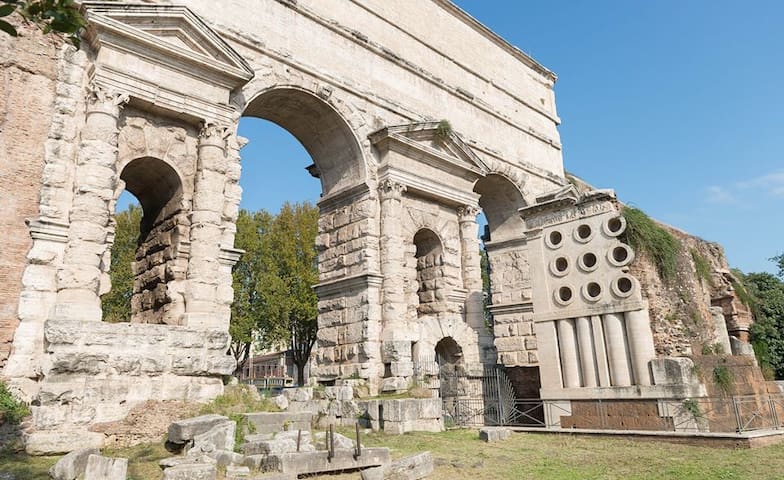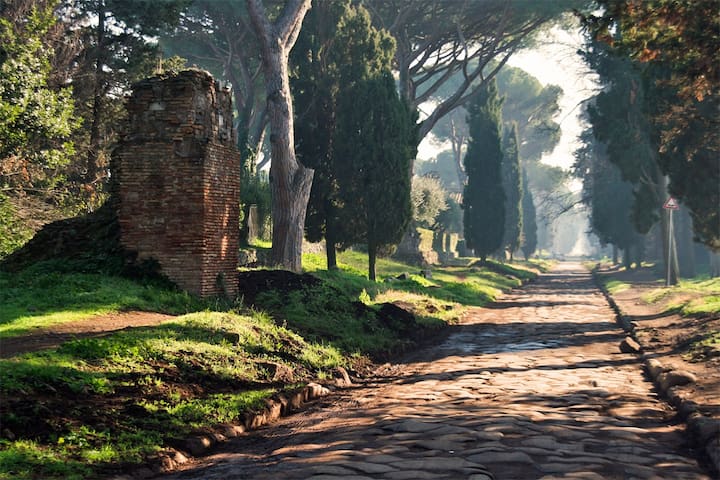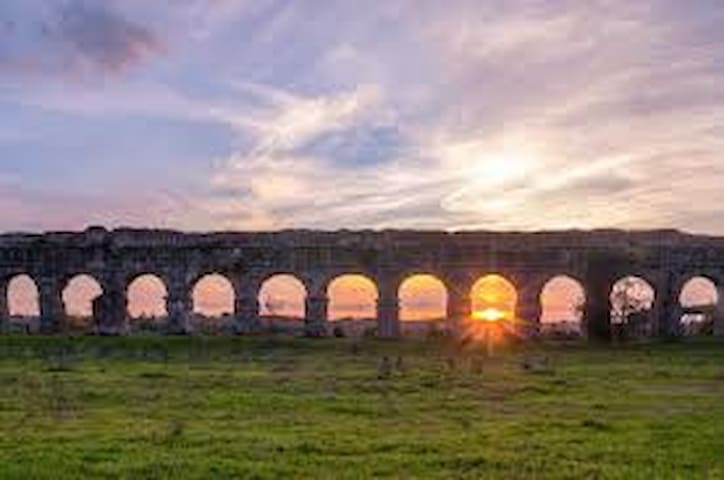Arts & Culture
The Museum of the Liberation of Rome is located in an apartment building at Via Tasso 145, Rome, close to the basilica of St. John Lateran. It records the period of German occupation of Rome in the Second World War and its subsequent liberation. The building housing the museum was used by the SS to torture members of the Italian Resistance in the first half of 1944.
26 Recomendado por los habitantes de la zona
Museum of the Liberation of Rome
145 Via Torquato TassoThe Museum of the Liberation of Rome is located in an apartment building at Via Tasso 145, Rome, close to the basilica of St. John Lateran. It records the period of German occupation of Rome in the Second World War and its subsequent liberation. The building housing the museum was used by the SS to torture members of the Italian Resistance in the first half of 1944.
The theater, built on a project by the architect Luca Carimini and then realized by the engineer Carlo Sacconi after the completion of the entire Brancaccio palace, was inaugurated on January 16, 1916 with the name of Teatro Morgana. The name then changed to Politeama Brancaccio, in memory of the original ownership of the site and the space was used, since 1937, also as a cinema.
111 Recomendado por los habitantes de la zona
Teatro Brancaccio
244 Via MerulanaThe theater, built on a project by the architect Luca Carimini and then realized by the engineer Carlo Sacconi after the completion of the entire Brancaccio palace, was inaugurated on January 16, 1916 with the name of Teatro Morgana. The name then changed to Politeama Brancaccio, in memory of the original ownership of the site and the space was used, since 1937, also as a cinema.
Palazzo Merulana, a space for culture and art, the Palace houses a rich collection of modern and contemporary art, mainly focused on the art of the Roman and Italian schools of the twentieth century.
22 Recomendado por los habitantes de la zona
Palazzo Merulana
121 Via MerulanaPalazzo Merulana, a space for culture and art, the Palace houses a rich collection of modern and contemporary art, mainly focused on the art of the Roman and Italian schools of the twentieth century.
Food Scene
Restaurant Pizzería Galilei
12 Via GalileiCiamei Caffè Srl
57 Via Emanuele FilibertoBuilt in the late nineteenth century, not far from Termini station, it was a place of great passage, after a first arrangement in 1913, the market continued to thrive during Fascism and survived the war and the black bag that was done under the arcades.
65 Recomendado por los habitantes de la zona
Nuevo Mercado Esquilino
184 Via Principe AmedeoBuilt in the late nineteenth century, not far from Termini station, it was a place of great passage, after a first arrangement in 1913, the market continued to thrive during Fascism and survived the war and the black bag that was done under the arcades.
Sightseeing
Centuries ago, along its corridors and rooms, you could admire the mosaics, marble furniture and even enter a rotating dining room where guests were surrounded by flower petals and perfumes; some of these wonders are still visible today. Prominent artists and historical figures have contributed to decorate this unique palace, with numerous frescoes, ceilings and vaults. The imperial residence is now an archaeological site to visit and discover.
212 Recomendado por los habitantes de la zona
Domus Aurea
Viale SerapideCenturies ago, along its corridors and rooms, you could admire the mosaics, marble furniture and even enter a rotating dining room where guests were surrounded by flower petals and perfumes; some of these wonders are still visible today. Prominent artists and historical figures have contributed to decorate this unique palace, with numerous frescoes, ceilings and vaults. The imperial residence is now an archaeological site to visit and discover.
Monti is the name of one of the twenty-two Rioni of Rome, rione I, located in Municipio I. The name literally means mountains in Italian and comes from the fact that the Esquiline and the Viminal Hills, and parts of the Quirinal and the Caelian Hills belonged to this rione.
399 Recomendado por los habitantes de la zona
Rione Monti
Monti is the name of one of the twenty-two Rioni of Rome, rione I, located in Municipio I. The name literally means mountains in Italian and comes from the fact that the Esquiline and the Viminal Hills, and parts of the Quirinal and the Caelian Hills belonged to this rione.
It is the oldest and highest ranking of the four papal major basilicas, holding the unique title of "archbasilica". It is the oldest public church in the city of Rome, and the oldest basilica of the Western world. It houses the cathedra of the Roman bishop, and has the title of ecumenical mother church of the Catholic faithful.
806 Recomendado por los habitantes de la zona
Arcibasilica di San Giovanni in Laterano
4 Piazza di S. Giovanni in LateranoIt is the oldest and highest ranking of the four papal major basilicas, holding the unique title of "archbasilica". It is the oldest public church in the city of Rome, and the oldest basilica of the Western world. It houses the cathedra of the Roman bishop, and has the title of ecumenical mother church of the Catholic faithful.
The Imperial Fora (Fori Imperiali in Italian) are a series of monumental fora (public squares), constructed in Rome over a period of one and a half centuries, between 46 BC and 113 AD. The forums were the center of the Roman Republic and of the Roman Empire.
541 Recomendado por los habitantes de la zona
Fori Imperiali
The Imperial Fora (Fori Imperiali in Italian) are a series of monumental fora (public squares), constructed in Rome over a period of one and a half centuries, between 46 BC and 113 AD. The forums were the center of the Roman Republic and of the Roman Empire.
Built on a pagan temple, dedicated to the goddess Cybele, the Basilica of Santa Maria Maggiore was built in the 4th century by order of Pope Liberius. According to legend, the Virgin appeared to the Pope, giving him instructions to build the church, while the shape of the plant was drawn by a miraculous snowfall.
63 Recomendado por los habitantes de la zona
Basilica of Saint Mary Major
Built on a pagan temple, dedicated to the goddess Cybele, the Basilica of Santa Maria Maggiore was built in the 4th century by order of Pope Liberius. According to legend, the Virgin appeared to the Pope, giving him instructions to build the church, while the shape of the plant was drawn by a miraculous snowfall.
The Colosseum, originally known as Amphitheatrum Flavium (in Italian: Anfiteatro Flavio) or simply as Amphitheatrum, is the largest amphitheater in the world, located in the center of the city of Rome. Able to contain an estimated number of spectators between 50,000 and 87,000 units, it is the most important Roman amphitheater, as well as the most imposing monument of ancient Rome that has come down to us, known worldwide as a symbol of the city of Rome and one of the symbols of Italy.
2612 Recomendado por los habitantes de la zona
Coliseo
1 Piazza del ColosseoThe Colosseum, originally known as Amphitheatrum Flavium (in Italian: Anfiteatro Flavio) or simply as Amphitheatrum, is the largest amphitheater in the world, located in the center of the city of Rome. Able to contain an estimated number of spectators between 50,000 and 87,000 units, it is the most important Roman amphitheater, as well as the most imposing monument of ancient Rome that has come down to us, known worldwide as a symbol of the city of Rome and one of the symbols of Italy.
Built under the Emperor Claudius in 52 to allow the Claudian aqueduct to climb over the Praenestina and Labicana streets, it is one of the gates of the Aurelian Walls, located at the point where eight of the eleven aqueducts that brought water to the city converged.
33 Recomendado por los habitantes de la zona
Porta Maggiore
Piazza di Porta MaggioreBuilt under the Emperor Claudius in 52 to allow the Claudian aqueduct to climb over the Praenestina and Labicana streets, it is one of the gates of the Aurelian Walls, located at the point where eight of the eleven aqueducts that brought water to the city converged.
Entertainment & Activities
Gatsby Cafè
106 P.za Vittorio Emanuele IIParks & Nature
The park aims to be a "green wedge" between the centre of Rome and the Alban Hills to the southeast. It contains a majority of the relics of Ancient Rome to be found outside the city centre. It consists of the Appian Way, from the centre of Rome to the 10th Mile, including the Villa of the Quintilii; the Park of the Caffarella; the Tombs of Via Latina archaeological zone; and the Aqueduct Park as well as other areas not accessible to the public.
292 Recomendado por los habitantes de la zona
Parque Regional de la Vía Apia Antica
42 Via Appia AnticaThe park aims to be a "green wedge" between the centre of Rome and the Alban Hills to the southeast. It contains a majority of the relics of Ancient Rome to be found outside the city centre. It consists of the Appian Way, from the centre of Rome to the 10th Mile, including the Villa of the Quintilii; the Park of the Caffarella; the Tombs of Via Latina archaeological zone; and the Aqueduct Park as well as other areas not accessible to the public.
The park is named after the aqueducts that go through it. It is crossed on one side by the Aqua Felix and also contains part of the Aqua Claudia and the remains of Villa delle Vignacce to the North West. A short stretch of the original Roman Via Latina can also be seen. The park is served by the subway stations Lucio Sestio and Giulio Agricola (line A).
274 Recomendado por los habitantes de la zona
Parco degli Acquedotti
221 Via LemoniaThe park is named after the aqueducts that go through it. It is crossed on one side by the Aqua Felix and also contains part of the Aqua Claudia and the remains of Villa delle Vignacce to the North West. A short stretch of the original Roman Via Latina can also be seen. The park is served by the subway stations Lucio Sestio and Giulio Agricola (line A).

